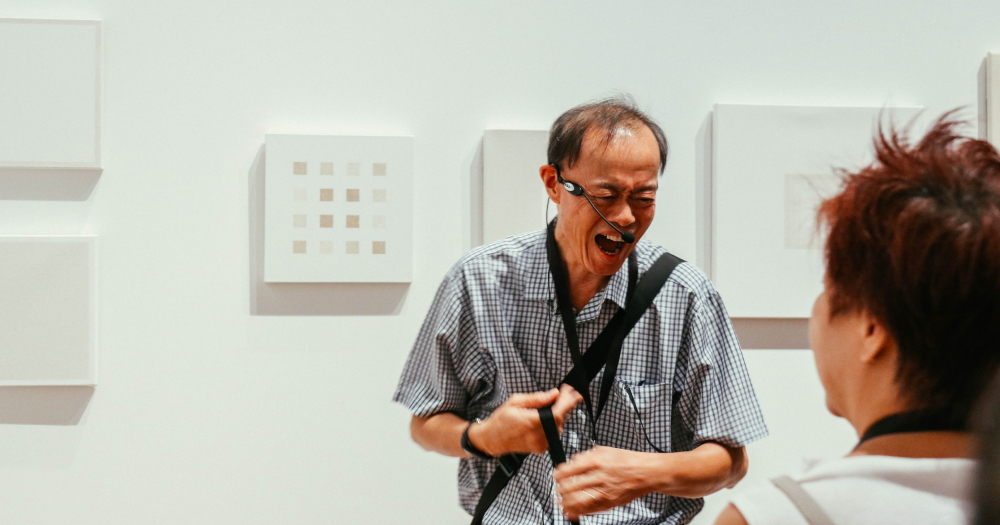Art can be intimidatingly inaccessible.
Not in the way that we can’t physically access it, because it’s available to us in abundance in outdoor spaces or in galleries.
But more in the way that it seems like frill reserved for the enjoyment of snotty hipsters with round glasses and upper-class so-and-so’s.
So you’d be forgiven for largely ignoring anything related to Singapore Biennale 2019 — I mean how do you even pronounce the word ‘biennale’ without sounding a little stupid?
However, there is one group of people working hard to reverse this notion. And no, they are neither snotty hipsters nor high-SES — though admittedly they are partial to vintage eyewear.
On the contrary, it’s a bunch of down-to-earth seniors.
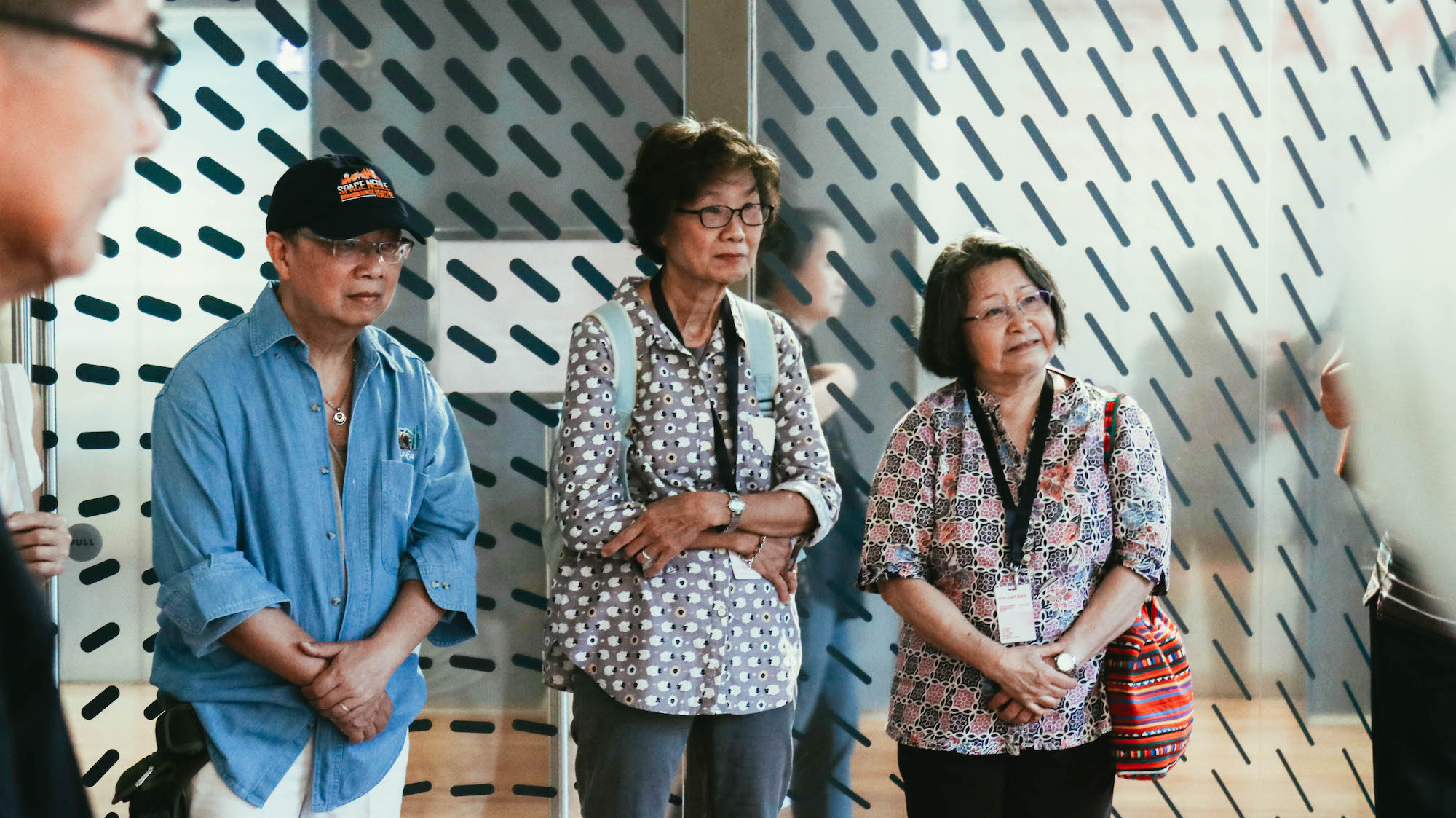 Image by Andrew Koay
Image by Andrew Koay
As part of Singapore Biennale 2019 organised by the Singapore Art Museum, this sprightly gang of greying heads will be leading tours at the Gillman Barracks and National Gallery Singapore in a programme called “Kopi, Teh and Contemporary Art”.
As the name alludes, this tour is inspired by the age-old activity of hanging out and sharing a tale or two over classically Singaporean beverages.
On the particular Friday that I visited the National Gallery — one of the 11 exhibition venues — 16 volunteers formed a huddle on the third level of the gallery in front of the words “Every Step In The Right Direction” — the title of this year’s exhibition.
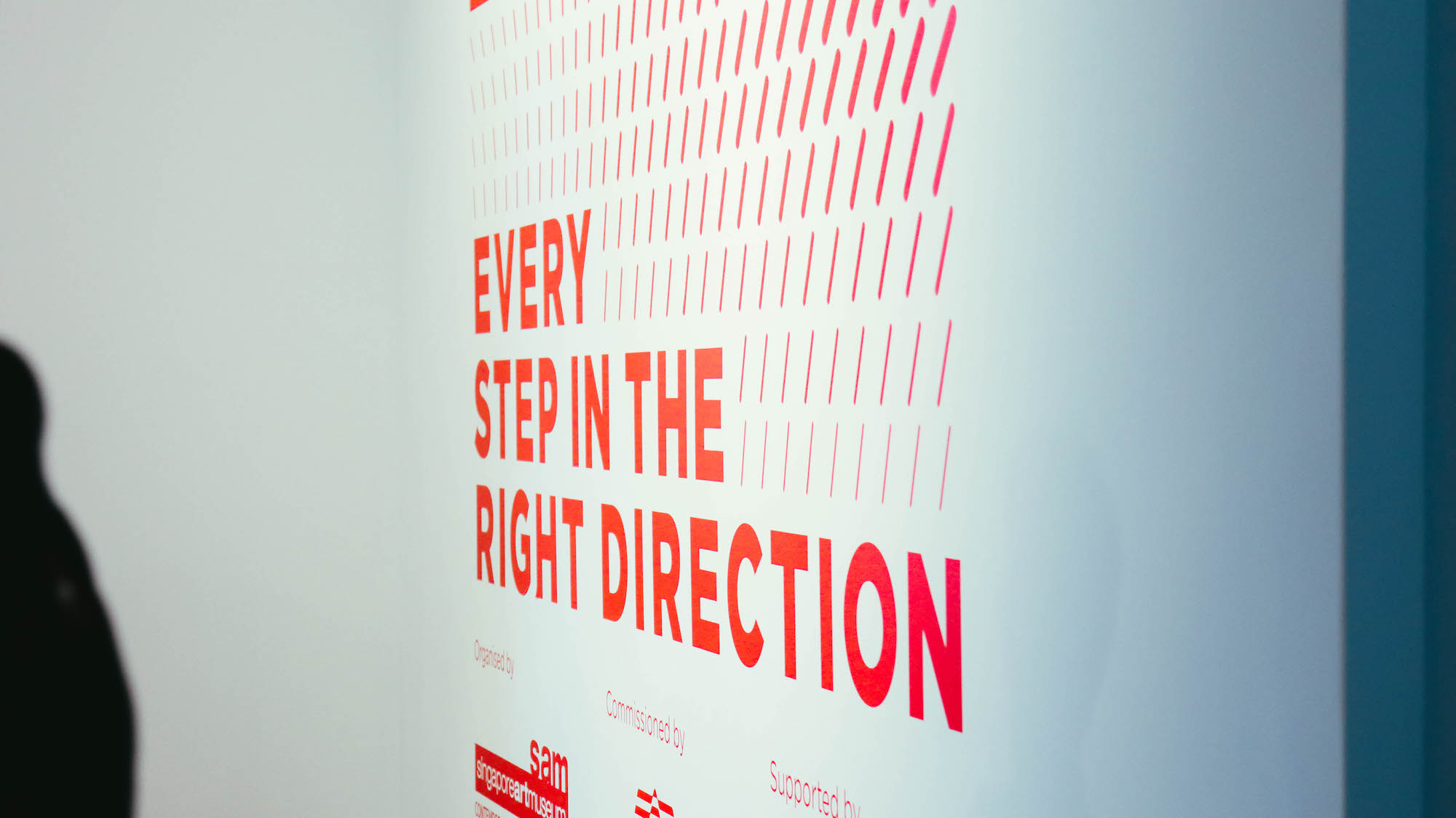 Image by Andrew Koay
Image by Andrew Koay
“What is your understanding of these words’?” asked Dee Chia, SAM’s head of Education and Programmes, and the person-in-charge of training volunteers to lead the tours.
Over the course of the ensuing discussion, it becomes clear that this year’s Biennale is centred around the current issues of today, and how artists and their audiences can respond to them.
The focus for these seniors leading the tours, though, is not so much about delving into deep critique of the artwork or exploring the esoteric technical qualities of the installations (whatever that means).
Instead, these special guides will be using the artwork as prompts to engage visitors with their own experiences and stories, in different languages and dialects, relating to themes and inspirations behind the works.
After a short demonstration by Chia, during which the volunteers furiously scribbled notes, the group was broken up and brought to three different works of art around the gallery to practice.
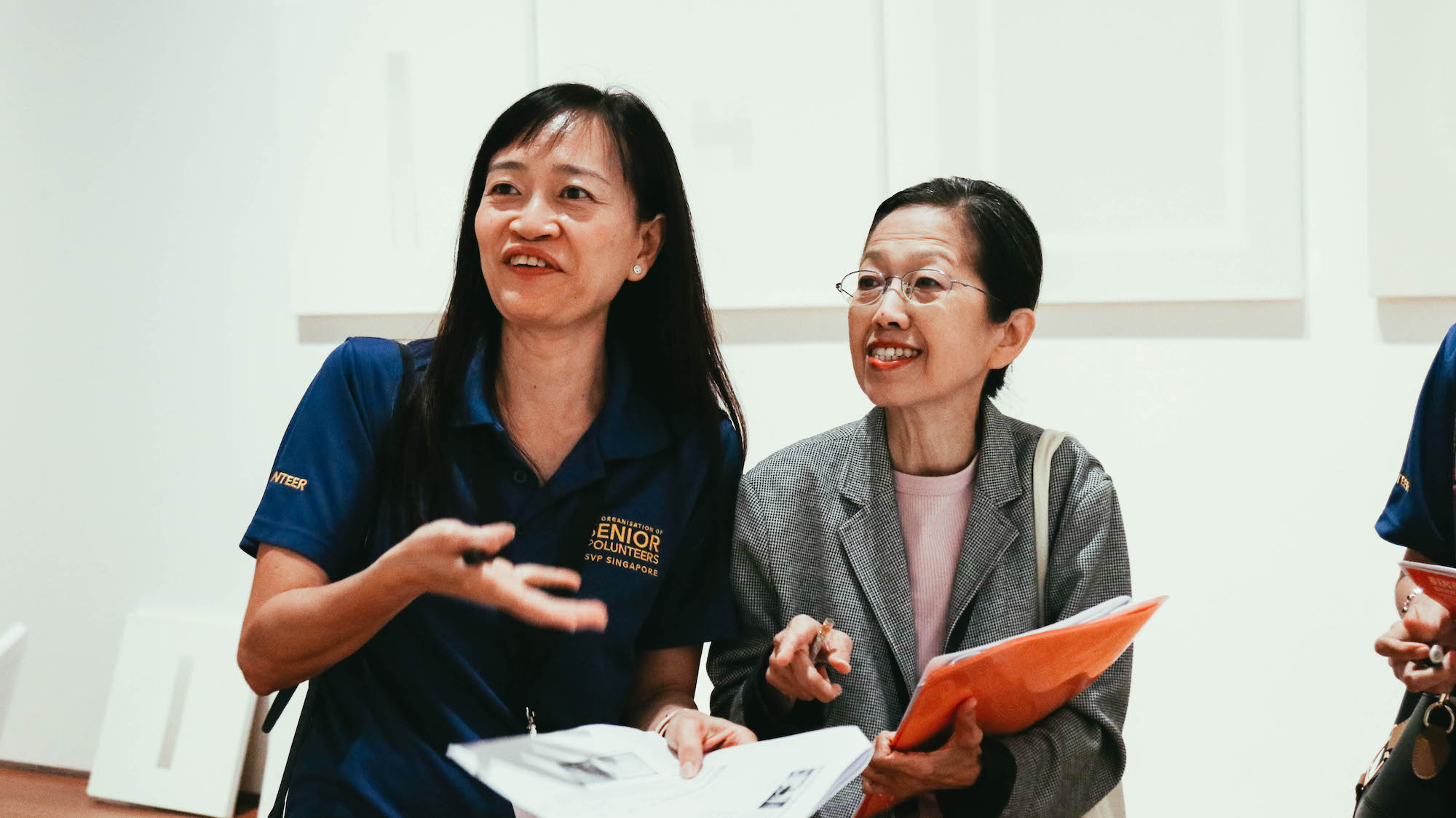 Image by Andrew Koay
Image by Andrew Koay
“Actually, art has no limits ah. No limits,” said 65-year-old Uncle Ling Lik Kwok to me after I watched him rehearse a presentation of “Phum Style” — a colourful backdrop of a Cambodian circus troupe called Phare, the Battambang Circus.
The troupe comprises students and graduates from a vocational training centre in Battambang, Cambodia. The non-profit organisation was founded by young Cambodian men returning from a refugee camp after the fall of the Khmer Rouge.
Despite having just learnt about the background of the performance, Uncle Ling rattled off facts and his own interpretations of it with impressive conviction.
“This art can really do a lot to help us tackle the issues,” he says, referring to the social benefits of art like “Phum Style”.
At another artwork — “Time: Dust” by Min Thein Sung — a roar of laughter erupts when one of the volunteers looking at the monochrome canvas remarks: “that one look like mahjong one!”.
“I just have two quick questions,” I said to Aunty Theresa Chin, who at 76 is one of the older members of the group.
“Two questions only ah?” she responded with a big grin.
Having no prior knowledge about art apart from the Chinese ink paintings she does as a hobby, Aunty Chin told me that volunteering for the tour has proved illuminating — especially in how approachable the artworks were.
“You can really interpret this contemporary art in any way. We cannot read the artist’s mind but we can use our own mind to interpret it!”
 Image by Andrew Koay
Image by Andrew Koay
Commenting on Min’s artwork that she endearingly calls “the dust one”, Aunty Chin said it reminded her about the issue of climate change and how it was “destroying our whole Earth”.
A fitting interpretation on a work created by dust collected on white canvases to form discernible shapes — the product of indeterminate forces from nature.
Nearby, Veronica Troncoso’s “Telling stories from outside and inside” was subject to a presentation by 69-year-old Uncle Ian Kwan.
The multimedia presentation stemmed from the artist’s conversations with migrant workers and local students.
Fun fact: Uncle Kwan is also a hip-hop dancer, and you can bet that he looks the part in his blue denim shirt and baseball cap.
As he spoke to me, he lamented that many people his age “don’t have a clue about contemporary art.”
“I think it’s a very good action by the Singapore Art Museum to get seniors involved.”
That was certainly the case for 72-year-old Aunty Kim Lan, who described her experience leading a tour as “opening my horizons”.
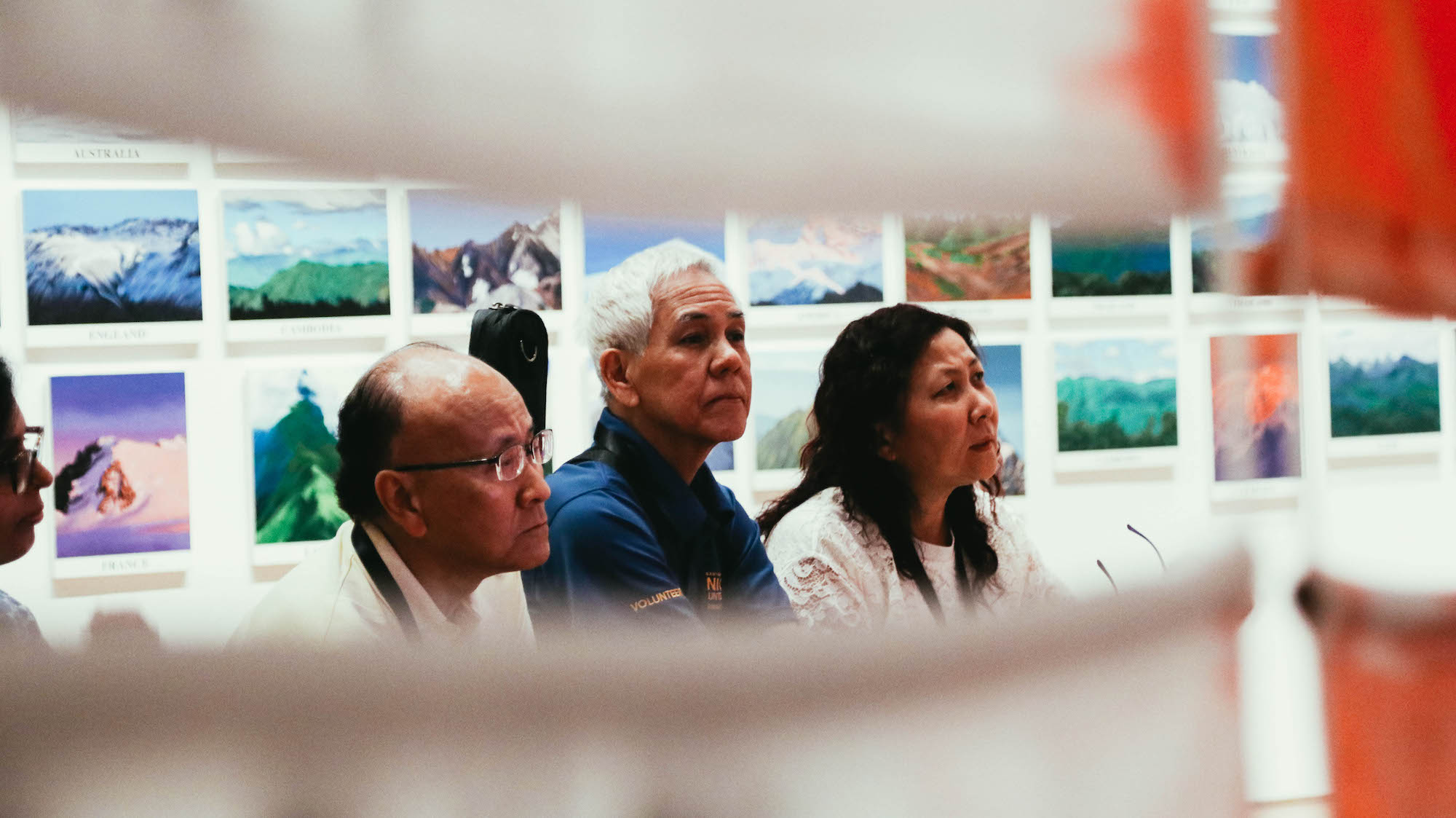 Image by Andrew Koay
Image by Andrew Koay
She told me that prior to the training session, contemporary art was not on her radar at all.
“I’m learning a lot myself from the experience. For me particularly I chose this because it’s not something I know a lot about and I wanted to learn.
As we grow old we shouldn’t deny ourselves these kinds of experiences!”
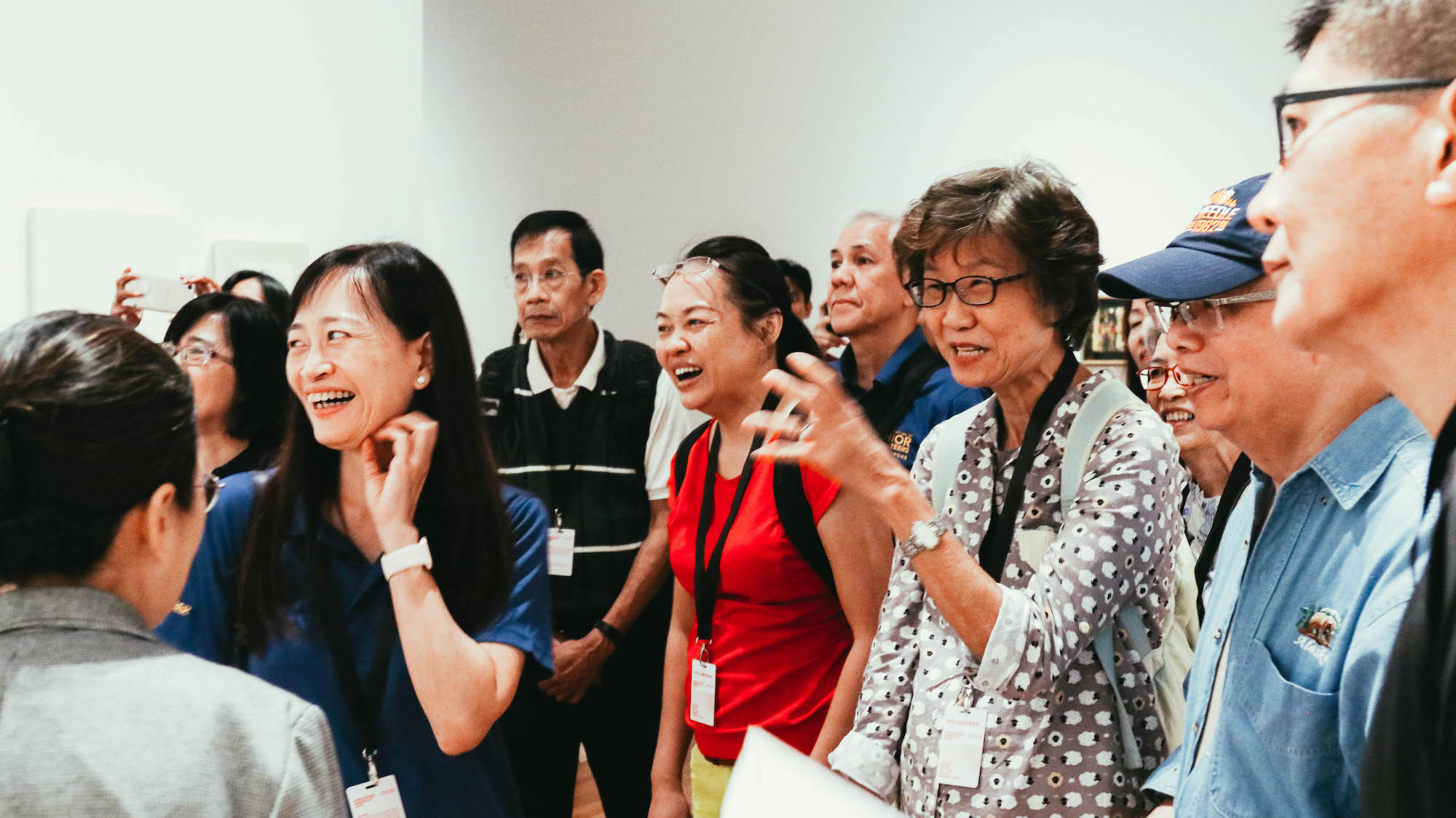 Image by Andrew Koay
Image by Andrew Koay
Anyone hoping to learn, as these seniors did, just how interesting and accessible contemporary art can be can hop onto a “Kopi, Teh and Contemporary Art” tour held as part of Singapore Biennale 2019 — where more than 150 works of art are being shown at 11 venues across Singapore.
With the exception of National Gallery Singapore, admission to all the venues is free.
However, Pioneer and Merdeka Generation cardholders can enjoy free entry to the National Gallery.
Attendees to “Kopi, Teh and Contemporary Art” will be able to enjoy a guided tour with a senior along with coffee and tea afterwards.
Tours, which will largely be based on sharing and storytelling by the seniors, will be held in various different languages, from English, Mandarin, and Malay to dialects such as Hokkien, Teochew, and Cantonese.
The next "Kopi, Teh and Contemporary Art" Tour will be conducted on February 21, 2020. More information can be found here.
Top image by Andrew Koay
Writing this Singapore Art Museum-sponsored article made the writer a hell of a lot more interested in all that artsy-fartsy stuff.
If you like what you read, follow us on Facebook, Instagram, Twitter and Telegram to get the latest updates.
